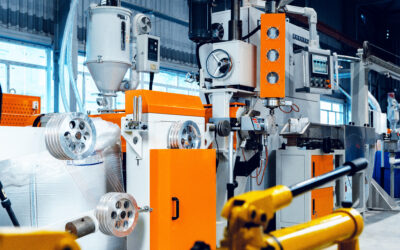The 7 wastes of Lean: how to get rid of them?
After rebounding slightly in July, French industrial production is now struggling to return to pre-crisis growth levels, with an increase of just 1.3% in the fourth quarter. With the exception of the food industry, the other sectors are particularly vulnerable and exposed, so manufacturers need to produce more efficiently. The best way to do this is to focus on the 7 areas of waste.
Lean manufacturing is a method of optimising industrial performance that is particularly well-suited to this context, and which aims to improve compliance with cost-quality-delivery requirements. It involves a detailed analysis of the various stages that make up the production process, followed by the elimination of all waste identified throughout the manufacturing process, resulting in greater efficiency and profitability.
Lean Manufacturing is therefore based on the elimination of waste (or Muda) within production processes. But what are these different types of waste? What impact do they have on your profitability? How can you eliminate this waste? In this article, we will try to answer these questions by identifying them and suggesting ways in which you can improve.
What is waste in Lean?
It’s very simple: waste is defined as an activity that the customer is not prepared to pay for and/or that adds no value to the process. It’s something that everyone knows and accepts, either because they’re used to it or because they’re afraid of change.
Studies show that only 5% of the time allocated to creating a product actually adds value; the rest represents tasks that involve more labour, materials or space but do not add value. It is therefore more than necessary to focus on reducing or eliminating the 7 wastes in order to produce more efficiently.
It’s through the elimination of waste that your processes will become richer in added value, enabling you to identify opportunities to improve your overall performance.
The 7 traditional wastes of Lean
Here are the seven wastes highlighted by Taiichi Ohno (Toyota engineer and father of the Toyota production system).
Unnecessary movements
Moving around doesn’t necessarily mean that you’re doing your job or that you’re doing it well. Unnecessary movement is a waste that adds no value for the customer. Grabbing the last pieces from the bottom of a pallet, going around an obstacle or looking for a misfiled document are rarely compatible with the notion of efficiency.
Who hasn’t had to deal with a maintenance technician arriving at a breakdown with an incomplete toolbox, leading to unnecessary round-trips and even a production line stoppage?
The solution? Observe your operator stations and produce in a 5S environment. This will save you time, energy and even potential injuries.
Waiting time
Like everyone else, you experience waiting every day: waiting in traffic jams, waiting for a letter, waiting for an answer… In a factory, waiting time is often caused by waiting for materials to arrive, waiting for the right instructions to start manufacturing or waiting for equipment with insufficient capacity.
Il existe des outils pour compenser ce temps sans valeur ajoutée, comme la méthode TPM (Total Productive Maintenance) ou la méthode SMED (changement rapide d’outil). Mais tu peux aussi utiliser des instructions de travail standardisées et former des travailleurs polyvalents et flexibles capables de s’adapter rapidement aux exigences du travail. Cette dernière méthode peut réduire ton temps d’attente jusqu’à 50 % !
Non-quality
In 2017, AFNOR carried out a study on the costs of non-quality in industry. The study showed that for the 2/3 of companies reporting that they measure the costs of non-quality, the related losses are around 5% of turnover. By focusing on non-quality issues, companies could recover 5 to 10% of their turnover.
This waste has a major impact on customer satisfaction and can lead to costs. For example, if a product is found not to be of good quality, additional manpower (temporary or fixed-term workers) may have to be mobilised for a given period to deal with customer problems.
Here too, production in a 5S environment and the introduction of Poka-Yoke are interesting levers for progress to eliminate rework and scrap.
Overproduction
Overproduction consists of producing in excess of actual customer orders. This anticipation is often motivated by the fear of running out and not being able to meet demand.
But rather than the ‘Just In Time’ philosophy of producing products just when you need them, the ‘Just In Case’ way of working causes a number of problems, resulting in unnecessary production time, storage costs and raw material expenses.
Pull production based on customer requirements (kanban), continuous flow (takt time) or training your staff are all solutions to remedy this wastage.
Unnecessary stocks
Stock is money asleep! Often linked to the notion of overproduction or poor planning, this waste results in financial immobilisation and a loss of storage space. In another context, it could correspond to an accumulation of emails or invoices.
Measures to overcome this problem include purchasing raw materials only when necessary and in sufficient quantities, reducing buffer zones and creating a queuing system to avoid overproduction.
Unnecessary operations
You will also find this type of waste in your daily life, when, before setting off on a well-deserved holiday, you check several times to make sure that the doors and the gas are closed properly. In a factory, waste is any action or task that does not add value for the customer.
The routine and tradition of the trade mean that operations are carried out which the product does not require, or no longer requires. An analysis of each operation carried out can shed light on this type of waste. Here’s a list of examples: too much quality control on a part during its manufacturing process, putting covers in place before painting operations, eliminating surplus material before the operation on the machine tool is complete.
Unnecessary transport
This concerns the unnecessary transport of materials, parts, products, documents or information. This waste can be due to bad habits or poorly organised workstations.
What’s the solution? Create a U-shaped cell! A workshop with a U-shaped configuration will group resources together to carry out different operations on the same part within the cell. This considerably reduces transport and waiting times between machines.
For some time now, alongside the 7 traditional forms of waste, an eighth has been increasingly cited.
Under-utilisation of employee skills
This waste is relatively unknown because it does not appear in the Toyota production system. However, it is clear that if you don’t call on the skills of your employees working on the front line, it becomes difficult to improve processes.
Your field staff are the best placed to detect problems and find solutions, so they play a key role in your continuous improvement process.
The notion of waste is important because it will be the driving force behind your Lean approach. In fact, it was simply by observing the various types of waste that Toyota created its entire production system. It is estimated that a company that has not implemented a Lean approach spends less than 20% of its time adding value. Imagine that the rest of the time is distributed between the 7 wastes. Companies with a degree of Lean maturity spend 80% on adding value. So, are you ready to take the plunge?



0 Comments